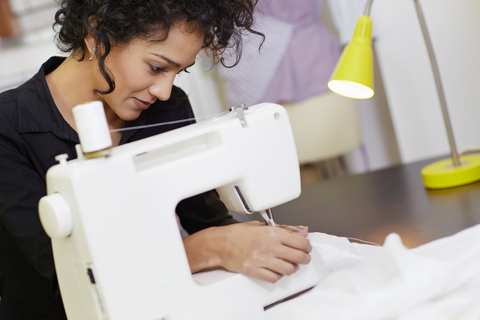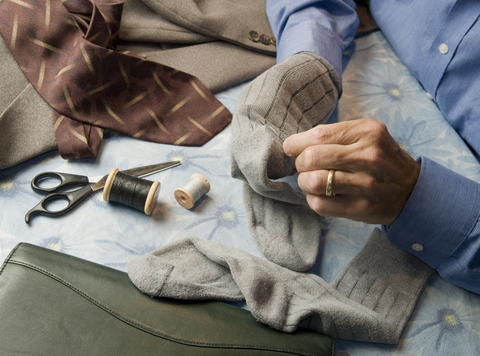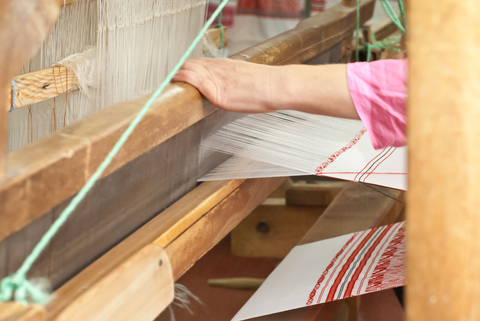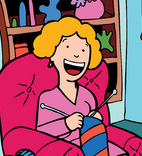 There are many benefits to using a knitting machine to create your knitted goods at home. For example, you can finish large knitting projects in a few hours rather than in a few days it would take you to hand knit the same project. While there are plenty of intimidating features to transition to when learning the knitting machine, a big advantage is that you can use some of your favorite basic hand knitting patterns for your first few projects. Basic hand knitting patterns that do not use complicated stitches, cables, or other patterns are very simple to convert to knitting machine patterns without any extra work. If you have a few basic stockinette stitch patterns that you would like to try on your new knitting machine, read on for how to knit them on a machine.
There are many benefits to using a knitting machine to create your knitted goods at home. For example, you can finish large knitting projects in a few hours rather than in a few days it would take you to hand knit the same project. While there are plenty of intimidating features to transition to when learning the knitting machine, a big advantage is that you can use some of your favorite basic hand knitting patterns for your first few projects. Basic hand knitting patterns that do not use complicated stitches, cables, or other patterns are very simple to convert to knitting machine patterns without any extra work. If you have a few basic stockinette stitch patterns that you would like to try on your new knitting machine, read on for how to knit them on a machine.
Hand Knitting Patterns vs. Knitting Machine Patterns
Most basic knitting patterns can be used on knitting machines without any converting. In fact, knitting machine patterns and hand knit patterns look almost exactly the same on the surface. You have a set amount of stitches to cast on, knit, and bind off, just like on a hand-knitting pattern. On knitting machine patterns that require several rows, or increases or decreases, you are still instructed to use stitch markers to help you count, too.
The biggest visible difference on basic knitting machine patterns is that instead of seeing a needle size requirement to meet the gauge, instead you’ll see a needle range. For example, instead of seeing instructions to use size 8 knitting needles, you’ll see instructions to use a mid-range knitting machine with a setting for your stitch dial.
How to Convert to a Knitting Machine Pattern
If you don’t have a pattern to use for your first few machine projects, you can easily use some simple hand knit patterns that don’t call for cables, bubble stitches, or lace. Using a hand knit pattern on a machine is pretty simple. Like with any new hobby, it is best to start with simple projects such as washcloths, scarves, or a simple wrap. To use your hand knit patterns for your knitting machine, the process is pretty simple.
The first thing you need to do is prepare your yarn for the machine. It needs to be made in a center-pull ball so that it can feed yarn to the machine fast enough. A typical skein will not unravel fast enough for a knitting machine. Once you’ve done this step, you can put the number of stitches the pattern calls for on your machine. This step will be explained in your manual. Then you simply push the carriage back and forth until you’ve reached the desired length for your project. You cast off by running the carriage over your knitting without any yarn. Be sure at this point to hold your work up so that it doesn’t fall to the ground or unravel fro the weight.
If you are using a ribbed pattern for your project, the process will be slightly different, and require a crochet hook or latch hook to use during the process. During cast on, you will skip the purl rows and then move your carriage back and forth for the length of the purls. Once you have completed the length that needs to be purled, you can take your crochet hook or latch tool and go up the ladder chaining in the spots where the stitches are skipped.
Machine knitting is a great way to quickly produce knits in your home. Whether you want to quickly make up a bunch of scarves for holiday gifts, make winter sweaters or socks for your family, or want to start up a knitting business, a knitting machine is a great way to increase your production and create beautiful items. If you want to start machine knitting and need some patterns to get you started, try using some of your regular knitting patterns on your machine. While your more complex projects will need real knitting machine patterns, simply converting your basic knitting patterns for use on your machine can work to complete your first few projects.






